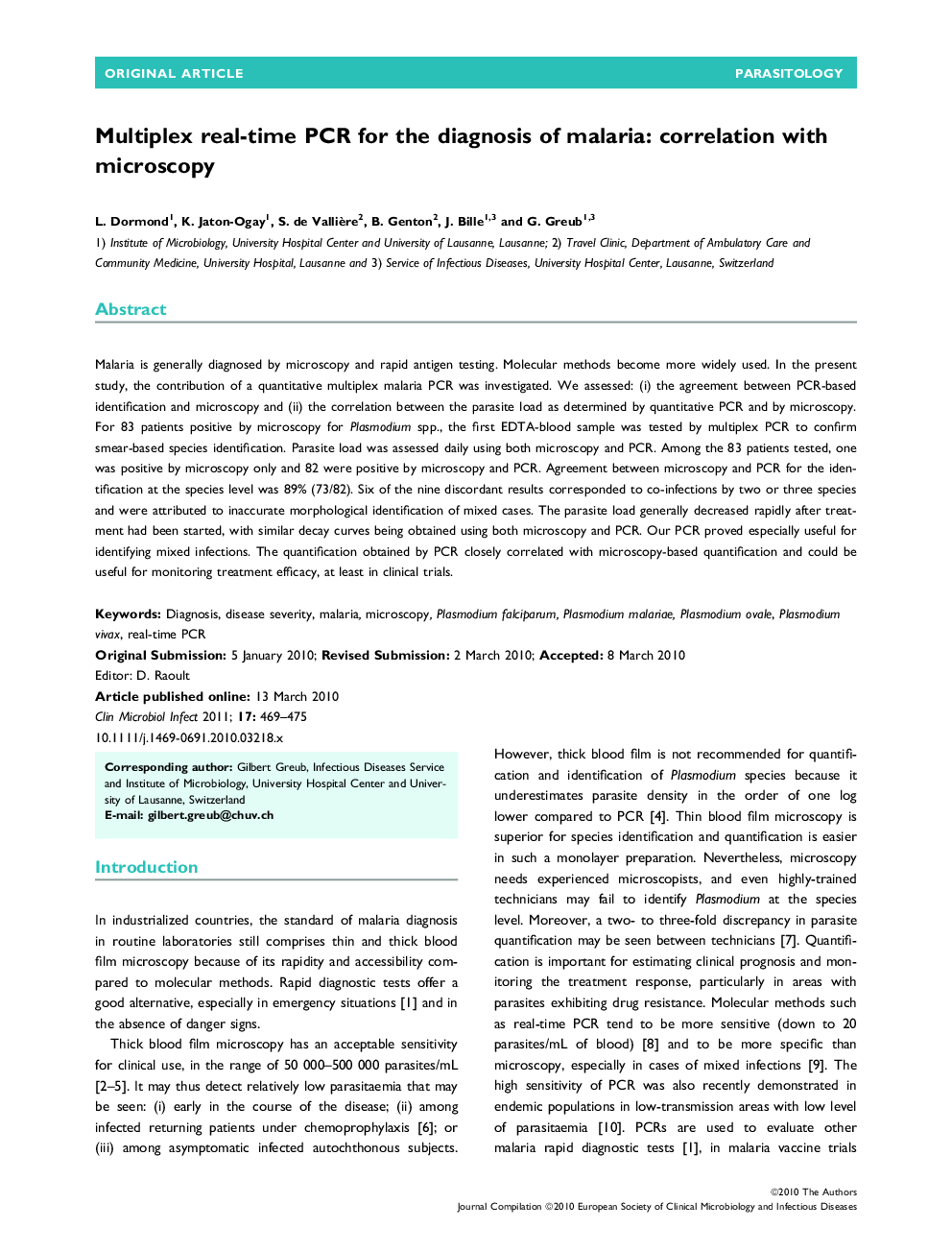| Article ID | Journal | Published Year | Pages | File Type |
|---|---|---|---|---|
| 3397548 | Clinical Microbiology and Infection | 2011 | 7 Pages |
Malaria is generally diagnosed by microscopy and rapid antigen testing. Molecular methods become more widely used. In the present study, the contribution of a quantitative multiplex malaria PCR was investigated. We assessed: (i) the agreement between PCR-based identification and microscopy and (ii) the correlation between the parasite load as determined by quantitative PCR and by microscopy. For 83 patients positive by microscopy for Plasmodium spp., the first EDTA-blood sample was tested by multiplex PCR to confirm smear-based species identification. Parasite load was assessed daily using both microscopy and PCR. Among the 83 patients tested, one was positive by microscopy only and 82 were positive by microscopy and PCR. Agreement between microscopy and PCR for the identification at the species level was 89% (73/82). Six of the nine discordant results corresponded to co-infections by two or three species and were attributed to inaccurate morphological identification of mixed cases. The parasite load generally decreased rapidly after treatment had been started, with similar decay curves being obtained using both microscopy and PCR. Our PCR proved especially useful for identifying mixed infections. The quantification obtained by PCR closely correlated with microscopy-based quantification and could be useful for monitoring treatment efficacy, at least in clinical trials.
